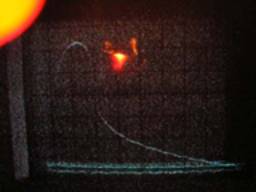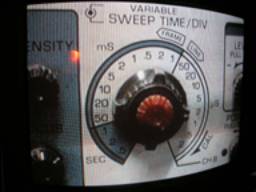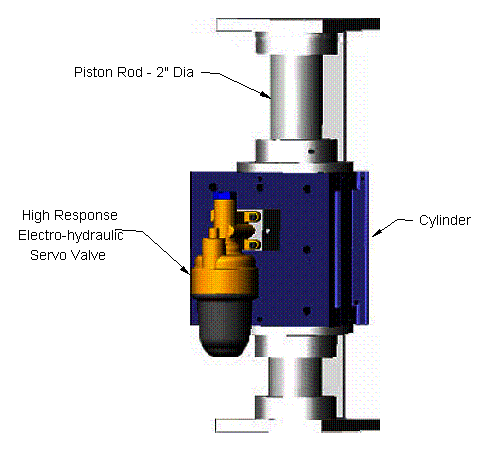
info@pacificcontrols.com
edm,micro,holes,mitsubishi,charmilles,sodick,agie,deep,beaumont,belmont,current,hycon,supplies,technologies,echo,solutions,zap,
makino,nnoble,ex,resources,solutions,system3r,hirschmann,erowa,sunspot,methods,network,edvanced,intech,technologies,
ENGINEERING
JOURNAL
EDM
System Design, Construction and Testing

EDM Basics
– during the EDMing process, electrical power is applied to the Gap
(the space
between the electrode and the work piece). If the conditions are
favorable, an EDM Spark
discharges in the Gap and erodes portion of the work piece.
EDM System controls the following EDM Spark parameters:
a/ Mechanical –
distance between the electrode and the work piece
- Gap Size = length of the EDM Spark = Overburn*
b/ Electrical –
amount of the supplied electrical power
- Gap Voltage
- Gap Current /
Cutting Current
length of the time, the electrical power feeds the EDM Spark
- ON Time
length of the time between the EDM Sparks
- OFF Time
polarity of the electrical power

Servo System – executes the
mechanical EDM Spark adjustment
During the EDM process the electrode needs to be moved specified distance to
adjust the Gap size
according to the quality of the EDM Spark.
Servo System has the function to move the Quill / Electrode closer or further
from the Work Piece,
according to the EDM Computer(s) generated Servo Commands.
Ideal Servo Systems needs to be responsive enough to adjust the Gap Size
according to the quality
of each EDM Spark accordingly, even if the system is set to 50,000 sparks per
each second.
Furthermore the necessary “EDM Spark adjusting distance” reaches practically
immeasurable levels,
specially in the SubMicroTM EDMing where the full length of the EDM
Spark can be as
short as .00005” / 1.3 mM.
The Gap needs to be as wide as necessary to allow the EDM spark to develop
into hot & efficient
condition.
Small Gap – spark will not be hot enough to fully burn the eroded material
resulting in Arc build up
in the Gap.
Wide Gap – spark will be broken, eroding will stop. The distance between the
electrode and the
work piece will be greater than the supplied electrical potential can concur and
EDM spark can jump.
EDM System must be fast enough to readjust the Gap into favorable spark
conditions or the work
piece eroding will stop.
There are two commonly used servo systems:
Electrical Servo System
Hydraulic Servo System

Electrical
servo consists of electrical stepper, servo or another type of motor,
appropriate
electronic drive and mechanical assembly.
As the electrical motor moves back and forth, to move the electrode closer or
further from
the work piece, it needs to go through no power, no control, “Dead Zone”.
This Dead Zone
greatly reduces systems response, since it consists of the “slowing /
powering-down” time period,
the “standing still” time period and the beginning of movement in the
reverse direction,
the “powering-up” time period.
In addition, the weight of the mechanical assembly, friction of its mounting
mechanism, and
of course the weight of the Electrode Tooling and the Electrode, further
negatively effect the response
of the electrical servo.

Hydraulic
servo - although with much higher initial cost then the electrical
servos, the hydraulic
servos have much greater response and operating force with practically
dismissible maintenance cost
throughout its lifetime.
Hydraulic servo consists of Electro-hydraulic Servo Valve, cylinder and
piston, plus as the electrical
servo, appropriate electronic drive. According to its design, additional
mechanical assembly may
or may not be incorporated.
To keep system response at its best, Pacific Controls EDM Systems do not
employ extra
mechanical assembly since the EDM Tooling is mounted directly to specially
designed, heavy
duty, servo piston rod.

Servo
response –
In summary, higher the Servo response, better the
Spark control, higher the EDM System
sensitivity, efficiency, and production output, especially when burning exotic
materials, deep small
holes and Micro EDMing.
75 to 100Hz is the common response of Electrical
EDM Servo with strict Electrode Tooling and
Electrode weight restrictions.----
1,000Hz response can be reached by the
hydraulic servo.

EDM Spark Generator – executes
the electrical EDM Spark adjustment
Commonly the EDM Spark Generator is the
simplest part of the EDM System. The Line Power
is converted to the desired power(s) and frequency(ies) level(s). Controlled by
the EDM Computer(s),
quality transistors through power level modules feed, the specified power, for
specified time period,
to the Gap.

Controller
Its task is quite simple. Monitor the Gap and accordingly generate commands
to control the Spark
Generator and the Servo System thereby keep the EDM Sparks to burn at efficient
and productive level.
Problem is the time factor.
Example - Operator setting of 10msec
ON Time and 10msec
OFF Time is quite common, but it
commands the Power Supply to generate 25,000 sparks per second.
25,000 ON times and 25,000 OFF times each second requires monitoring system
with high speed
communicating, analyzing and executing capabilities.
During the design and manufacturing of the EDMs, the speed of
light/electricity needs to be taking
into consideration. It takes 1nano second for the electricity to travel through
each foot of wire.

Pacific
Controls EDM System in
detail
Back in 1971, during the development of Pacific Controls High Response
Electro-hydraulic
Servo Valve, EDMing of ports in the hydraulic sleeve was required. During this
operation it came
quickly apparent, that the EDM Machine had quite difficulties to control the Gap
conditions resulting
in inefficient burn.
In summary, there was a need to be filled.
Pacific Controls patented High Response Electro-hydraulic EDM servo was born.
560Hz is the natural frequency of Pacific
Controls High Response Electro-hydraulic Servo Valve
2,500 Lbs or 1,125 Kp is the Quill piston operating force results in
dismissal of the bearings
and the seals friction, and accepts weight of the Electrode and its Tooling up
to 250Lbs / 112 Kp.
Pacific Controls Super High Response Servo System has 4 mseconds
error, meaning length
of the lag between electric command & mechanical movement of the servo.



4 micro
seconds of course directly represents 250,000Hz.

Please note that during the development of special OD grinder, to be
manufactured by the
Landis Gardner Company for Cumming Engine Company, University of California Los
Angeles / UCLA
extensively tested Pacific Controls EDM System with the following result:
No change in the
servo response even with 600 Lbs. / 270 Kp heavy load

To have the EDM burn at its maximum efficiency, EDM System must be able to
monitor multiple
parameters of each and every spark separately, even if the operator set-up calls
for 50,000 sparks
per second.
To precisely monitor the EDM Sparks, Pacific Controls EDMs incorporate three
EDM Computers,
arranged into Pacific Controls exclusive, “Triple EDM Computer
Configuration”.
Burning with electrodes as heavy as 250 Lbs / 112 kp and Cutting Current as
high as 400 Amperes,
or SubMicro EDMing with Electrode as thin as .0001” / 2.5 mM
and Cutting Current as low as
0.002 Amperes, is the operational envelope of Pacific Controls EDM Systems.
To keep up with “the need for speed” and have the ability to generate,
monitor, analyze & correct
each and every EDM spark separately, Pacific Controls EDM Systems employs
multiple EDM c
omputers, packaged into Pacific Controls exclusive, “Triple EDM Computer
Configuration”.
Note the heavy duty construction of Pacific Controls Quill
–





